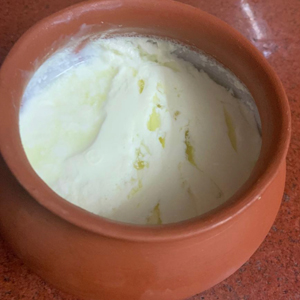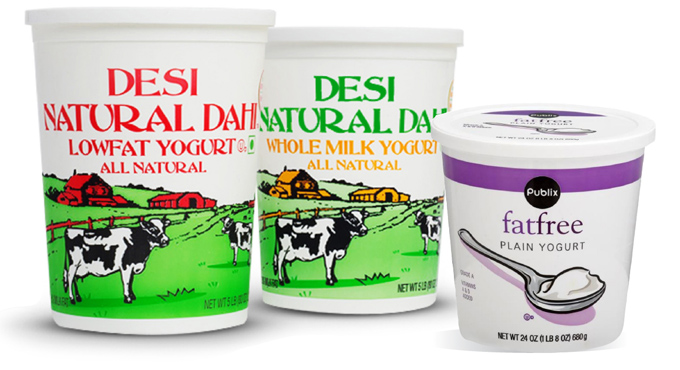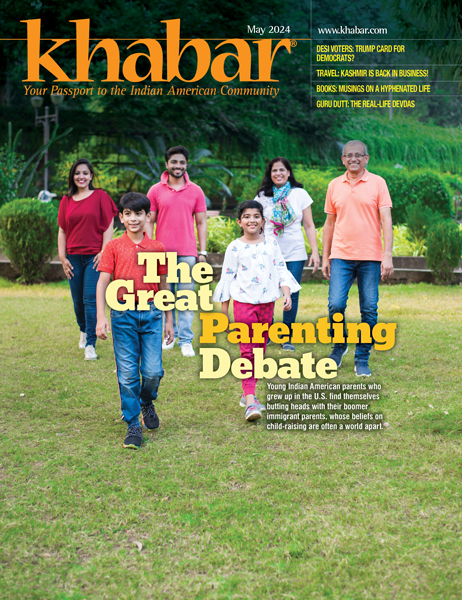The Immigrant: For the sweet love of Dahi made sweeter by its containers

A delightful walk down memory lane when love of dahi traveled all the way from an Indian childhood to an American life and found yogurt in its many flavors. And not just yogurt, but also its oh-so-important containers.
We never bought yogurt at a grocery store in India. In fact, we did not call it yogurt. We called it dahi, my Bengali friend Mahua who could not help rolling her vowels called it dohi. On special occasions, the nuns at St. Angela Sophia in Chembur sold Curd Rice—a gooey mixture of yogurt with rice tempered with mustard seeds, red chillies and curry leaves—at the school canteen at two rupees for a plateful.
Fair like dawn
Born to hold a miracle
Replete with a round of goodness
Supple and soft contours
Always a team player
Blending to make life easier
I never knew how curd was made. It had a milky taste and somehow appeared magically on our lunch table in a round earthenware pot. There it sat comfortably rubbing shoulders with covered tureens of Dal Tadka, fried okra, Egg Curry, salad, mint chutney, and hot mango pickles.
I ate my yogurt like my great grandmother and my daddy—with a heaped spoonful of granulated Indian cane sugar. It was a treat to swirl the sweetness into the rich full fat curd. I lingered over this activity even as I kept vigil through the corner of my eye on moodha, the large wicker chair, with an overstuffed silk cushion. This was my favorite spot to curl up in with my curd and comic books. I always raced my sister to this coveted seat and stayed there for several idle hours spooning sweet dohi into my mouth and reading Hindi magazines popular in those days for children: Chanda Mama, Amar Chira Katha, Champak, and Paraag.
But good times come to an end sooner rather than later. By some act of destiny, my life’s sweet milk curdled in the ensuing years—what I like to call the second chapter of my life—and I was propelled headlong into the adventurous third chapter. Though I was well versed in the art of storytelling and trained in the science of healing, I had no clue how to set the curd of an arranged marriage. Fueled by an overactive imagination and aided by fate, I ran away from home.
I ran all the way to America. America—the land of the free—was that aspirational place then where one could realize dreams. Everything was different in the United States including food habits compared to India. Americans loved to eat barbecue, burgers, and fries. The only options for a vegetarian like me were lettuce and dessert. That was all I had to sustain myself until at a Deli on the upper east side in Manhattan, I discovered bagels with cream cheese and yogurt. But this yogurt, unlike the Indian dahi, was delectably flavored with vanilla, strawberry…and had fruit at the bottom: bananas, peaches, blueberries. Plain was not an option. I bought a few cans and enjoyed them mornings, afternoons, and evenings as I sat watching American TV shows: Full House, Different Strokes, Seinfeld, and the Cosby show (which has been erased from memory and the internet now!)
Aristotle said that the roots of education are bitter, but the fruit is sweet...and I had a sweet tooth. But of course, we know that excessive consumption of sugar is not suitable. The “fruit yogurt mono diet” did a number on my metabolism. My blood sugar suffered enormous mood swings ranging from 20s to 200s in barely a few hours! Blood was drawn to run a battery of tests. I walked the whole way from the East 80th to the West side holstered to a device recording my skipping heartbeat! Friends and colleagues offered unsolicited advice to go back to India. “If you are sick, it’s best to go home.”
I was sick and tired of being sick, so I packed my vintage Samsonite suitcase and booked my Air India flight from New York to Bombay. I received a stipend of $1600 in those days. Rent and utilities were $950 and there was little left over for food and expensive international phone calls. Somehow, I managed to purchase a ticket.
As I packed to leave, one of my friend’s husband, who took great pride in his resemblance to a veteran actor Sunil Dutt, told me to buy souvenirs for my family in India. “But my bag is packed, and I don’t have space,” I told him. “What do you have in that bulky bag?” he asked. “Books,” I said confused as though there could be anything more valuable than books to carry across the Atlantic. “Books!,” he scoffed. “For a $100, you could have bought a bag full of giveaways at the Woolworths store!” he admonished me. I was contrite at my thoughtlessness, but tried to remedy it by purchasing bags of Hershey Kisses, cheese crackers, cookies, make up, perfume, and shaving cream for my dad.
It was wonderful to be back home. Happiness pervaded my soul with hugs and home cooked meals. My blood sugar was back in range, thanks to piping hot parathas, the unleavened Indian bread, and big bowls of homemade curd. I sat after dinner with my family regaling them about my adventures in the Big Apple. My stories of subway rides were some of the hairiest because even in the nineties, to ride a New York subway was to encounter really bizarre passengers. The only redeeming treat, I told my family in these after-dinner chats, was a South Asian vendor who rented pirated copies
of Bollywood movies outside the Grand Central station. He never charged me more than a dollar as late fee because he believed that I was the actress Madhuri Dixit in the flesh.
I watched Indian television serials with my family. Hum Log, Malgudi Days, and Fauji were popular then. My dad reviewed my blood reports and gently told me that because my gut was used to Indian plant-based diet that was rich in fiber, I should try to stick to that on my return to the US to prevent fluctuations in blood glucose.
Time flies like a peregrine falcon when you are in good company. Soon it was time to return to New York. I packed my trusty Samsonite with besan laddoos, puris, and a jar of pickled cauliflower and carrots. I also bought a few Indian books I could not find in Manhattan: Autobiography of a Yogi, Indian Cooking by Madhur Jaffrey, Amrita Pritam’s poetry and Rubaiyat by Omar Khayyam.
Back in the US, I requested my friend to take me to Jackson Heights in Queens for Indian groceries. It’s here that I first found a white can of home-style Desi Indian yogurt. In those days low fat was not available, so I bought two cans of full fat yogurt along with fresh vegetables. Since that time, I buy yogurt from Indian stores and always eat a couple of spoons with every meal. It comes in handy to make raita or soothe my palate after spicy curries.
Over the years I have collected a few yogurt containers. In India, everything used be recycled before plastic became mass produced in morbidly excessive quantities. Because of my heritage and much to the exasperation of my daughter, I don’t easily throw out these containers but use them to store anything and everything. I keep leftover rotini pasta, vegetable biryani, tofu curry, sambar, Palak Paneer, rice pudding, etc. in my fridge. They also work great to pack dry lentils, rice, coriander seeds, cumin, loose leaf tea, and red whole chilies in the pantry.

Under the kitchen sink, supplies like dishwasher pods, sponges, iron wool and soap also can be stashed away in these containers. Garden supplies, bird seed, miracle grow, and accoutrements of an herb garden especially fenugreek, red chilly peppers, and anise keep very well in these plastic containers. They can also serve as quick DIY ideas to water and plant pansies, jade plant curry leaves, and marigolds by the kitchen windowsill. My closet has a few cans with spools of threads and needles in them.
I know I will replace my containers by and by, but there is one container that I will always keep. There is nothing unusual about this one and it feels light when I lift it but when I open it to peek inside, it transforms. Out come tumbling countless rollicking memories of childhood. Jokes and shared laughter envelope me in a soft cloud of elation!
As I conclude my ode to this very versatile household item that has kept me healthy in a foreign land, I resist the temptation to label the outside with a magic marker because I want it to remain elusive. Marie Kondo would approve of my organization skills but if she opened a yogurt can in my home, she would be in for a surprise every time!
Monita Soni, MD, of Decatur, Alabama, grew up in Mumbai. She is a pathologist who diagnoses cancer in her day job. Writing is a passion that splashes her literally with a sparkling abundance.
Enjoyed reading Khabar magazine? Subscribe to Khabar and get a full digital copy of this Indian-American community magazine.
blog comments powered by Disqus












